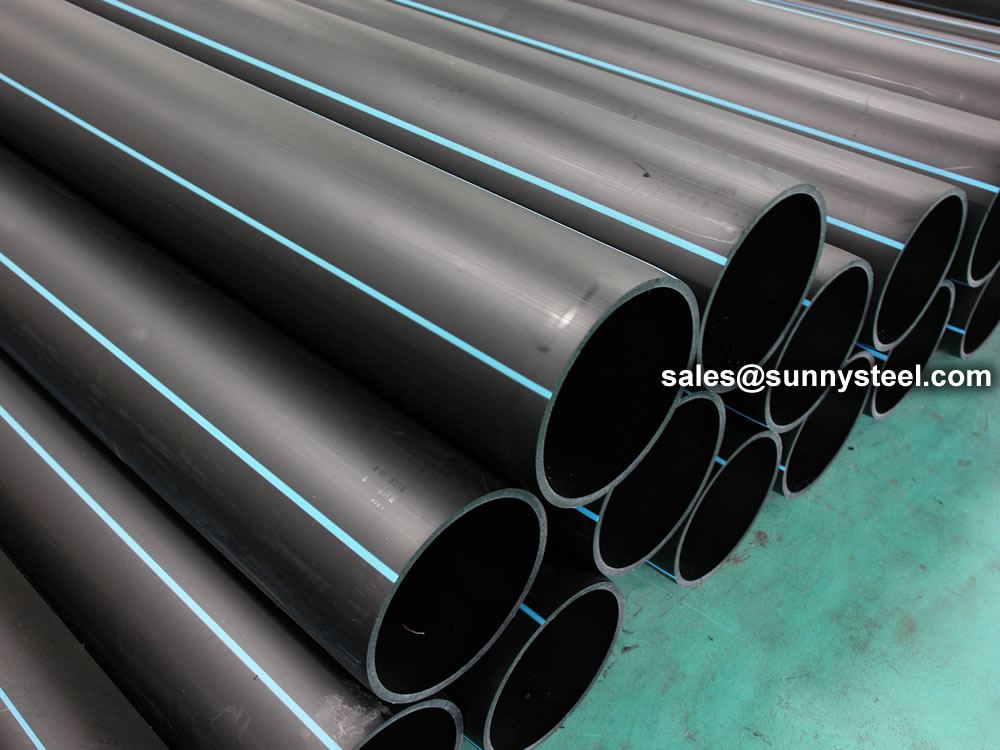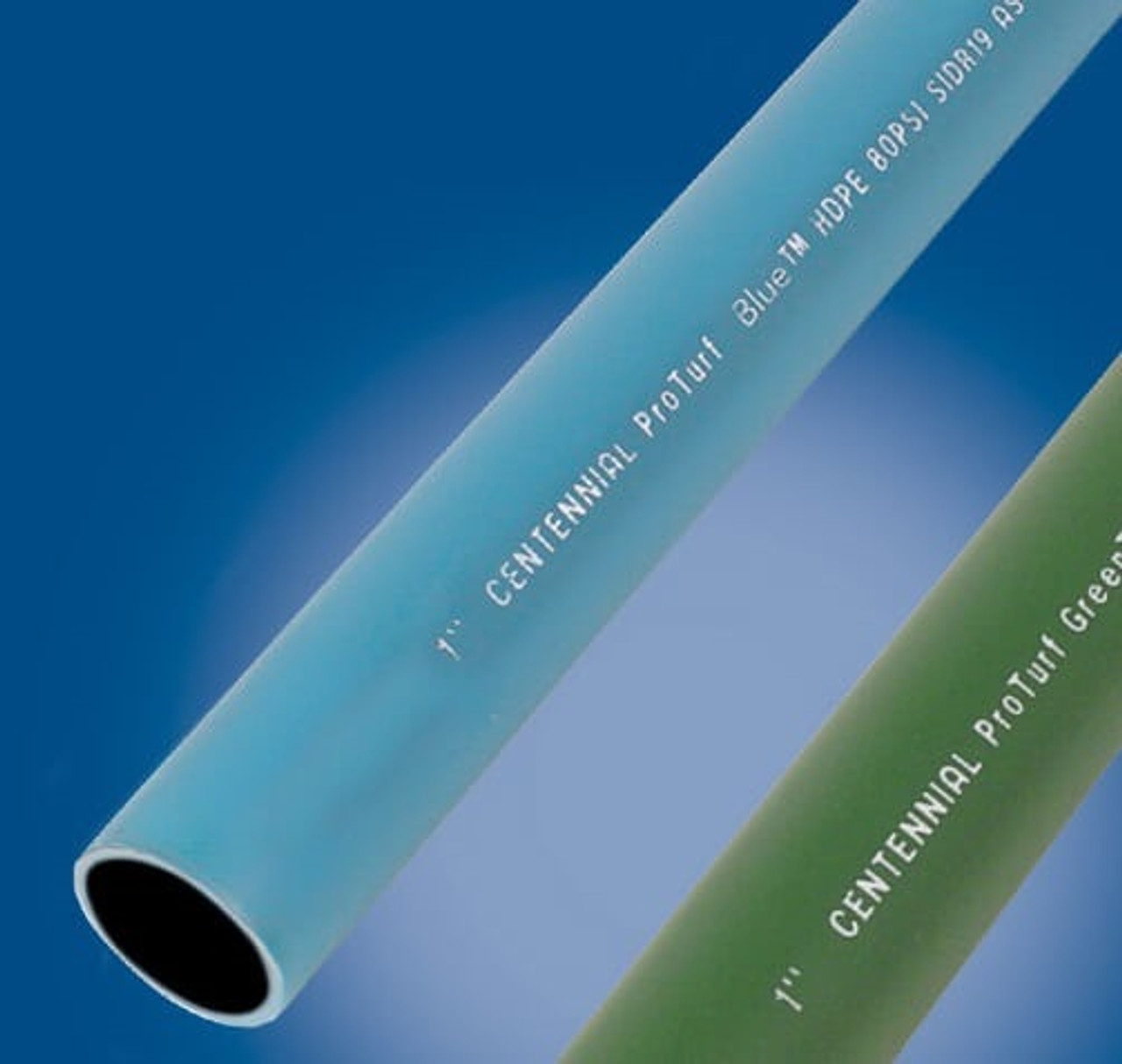Where to Find hdpe pipe in stock Midland TX for Urgent Projects
Wiki Article
Check Out the Production Refine Behind High-Quality HDPE Pipeline and Its Applications
The production process of high-quality HDPE pipelines is intricate and methodical. It starts with the choice of raw products that improve efficiency. Following this, ethylene undertakes polymerization to form resin, which is after that formed via extrusion. Quality control is paramount, ensuring that the end product meets rigorous criteria. The journey of HDPE pipes does not end with manufacturing. Their applications throughout different sectors reveal a more comprehensive value worth checking out.Recognizing HDPE: Residences and Advantages

High-density polyethylene (HDPE) is a versatile thermoplastic understood for its resilience and resistance to various ecological elements. This material displays excellent tensile toughness, making it ideal for demanding applications. Its low-density framework adds to a light-weight product, helping with ease of taking care of and setup. HDPE likewise showcases remarkable resistance to chemicals, which lessens destruction when revealed to rough substances.
The product's low wetness absorption additionally improves its long life, making it excellent for use in pipes and storage space tanks. In addition, HDPE is resistant to ultraviolet (UV) radiation, guaranteeing that products keep their integrity also when subjected to sunshine. Furthermore, its adaptability permits the production of elaborate shapes without endangering strength. The environmentally friendly nature of HDPE, frequently originated from recycled products, includes to its appeal, promoting sustainable techniques in production. Overall, these homes and benefits make HDPE a favored option for numerous industrial and customer applications.
Basic Material Selection for HDPE Manufacturing
The choice of basic materials for HDPE production is vital to validate the final product fulfills the preferred specs and top quality standards. High-density polyethylene (HDPE) is largely produced from polymerized ethylene, stemmed from fossil fuels such as all-natural gas or petroleum. The high quality of these feedstocks substantially affects the mechanical and thermal residential properties of the last HDPE.Additives additionally play a substantial duty in improving HDPE's performance, consisting of antioxidants, UV stabilizers, and colorants, which improve longevity and resistance to environmental aspects. The selection procedure should take into consideration not only the chemical composition of the raw products but also their handling attributes to ensure efficient production.
In addition, the sourcing of basic materials need to prioritize sustainability and conformity with environmental regulations, as liable practices are critical in today's market. Ultimately, mindful resources option lays the foundation for generating premium HDPE pipelines appropriate for varied applications.
The Extrusion Refine: Shaping HDPE Pipeline
The extrusion process plays a crucial duty fit HDPE pipelines, starting with meticulous material prep work techniques that ensure optimal flow and consistency. Similarly crucial is the layout of the die, which straight influences the final dimensions and surface top quality of the pipeline. Together, these aspects contribute considerably to the efficiency and high quality of HDPE pipeline production.Material Prep Work Techniques
Efficient manufacturing of HDPE pipelines starts with precise product prep work techniques, specifically the extrusion procedure. During this phase, high-density polyethylene resin is initial dried out to remove dampness, making certain perfect circulation qualities. The material is after that fed into the extruder, where it undergoes heating and melting, changing into a thick state. This home heating procedure is carefully regulated to maintain the product's integrity and efficiency. The molten HDPE is forced via a die, shaping it into a constant pipe kind. Appropriate temperature administration throughout extrusion is crucial, as it directly affects the product's buildings and the final product top quality. When shaped, the HDPE pipe is cooled and reduced to defined sizes, prepared for succeeding processing and applications.Die Style Relevance
Precision in die design plays a necessary role in the extrusion procedure of HDPE pipelines. The die works as the final shaping device, directly influencing the pipeline's dimensions, wall thickness, and surface finish. A well-designed die assurances uniform product flow, decreasing issues such as irregularities and weak points. The geometry of the die should be maximized to suit the certain residential properties of HDPE, including its thickness and thermal actions during extrusion. Furthermore, the cooling rate of the product as it passes through the die can noticeably impact the pipeline's structural integrity. Spending in sophisticated die technology is crucial for producers intending to generate top quality HDPE pipes that meet industry requirements and client assumptions.Quality Control Steps in HDPE Manufacturing
Different elements affect the high quality of HDPE pipeline production, reliable top quality control procedures are vital to ensure uniformity and dependability in the final item (Texas hdpe pipe manufacturer). Secret quality assurance practices consist of rigorous material assessment, verifying that the raw polyethylene meets established criteria for pureness and density. During the extrusion process, criteria such as temperature level, stress, and see this page cooling time are closely kept an eye on to preserve dimensional precision and architectural integrityOn top of that, post-production testing is vital; makers often carry out hydrostatic tests to examine the pipeline's stamina and resistance to pressure. Visual assessments for surface flaws further enhance quality control. Qualification from relevant standards organizations, like ASTM or ISO, supplies an extra layer of integrity. By carrying out these thorough quality assurance procedures, suppliers can lessen issues, improve efficiency, and guarantee that the HDPE pipes fulfill the particular needs of numerous applications, ultimately leading to consumer contentment and count on the item.
Applications of HDPE Pipeline Throughout Industries
HDPE pipes are utilized throughout different fields because of their sturdiness and convenience. In water distribution systems, they assure effective distribution, while in wastewater management, they give trusted remedies for waste transportation. Furthermore, farming watering networks gain from HDPE's resistance to deterioration and versatility, making it a suitable choice for contemporary farming techniques.
Water Distribution Systems
A considerable variety of markets rely on high-density polyethylene (HDPE) pipes for effective water circulation systems. Recognized for their durability and resistance to rust, HDPE pipelines are commonly utilized in community water supply networks, agricultural irrigation, and industrial applications. Their lightweight nature assists in simple handling and installation, reducing labor costs and time. Furthermore, HDPE pipes can fit numerous stress levels, making them ideal for both reduced and high-pressure systems. hdpe pipe fittings Midland TX. The adaptability of the material permits for seamless combination into existing facilities, decreasing the requirement for extensive excavation. HDPE's resistance to chemical seeping warranties that the water supplied continues to be risk-free and tidy, making it an optimal option for keeping the high quality of potable water across various sectors.Wastewater Monitoring Solutions
Efficient water distribution systems also lead the way for cutting-edge wastewater administration solutions, where high-density polyethylene (HDPE) pipes play a significant duty. Distinguished for their sturdiness and resistance to corrosion, HDPE pipes are excellent for carrying wastewater in numerous settings. Their adaptability enables for very easy setup in intricate settings, lessening the requirement for comprehensive excavation. In addition, HDPE's smooth interior surface minimizes rubbing, enhancing flow prices and performance. These pipelines are additionally resistant to chemical leaching, making certain that pollutants do not jeopardize the surrounding atmosphere. Industries, districts, and treatment centers progressively rely on HDPE pipes for their dependability and long life, making them a preferred option for modern-day wastewater management systems. This adaptability underscores the crucial importance of HDPE pipelines across many applications.Agricultural Watering Networks
Agricultural watering networks benefit considerably from making use of high-density polyethylene (HDPE) pipes, which supply efficient and reliable water shipment to crops. HDPE pipelines are light-weight, making them simple to transport and set up, while their adaptability enables various setups in varied terrains. These pipes demonstrate superb resistance to corrosion, chemicals, and UV radiation, making certain toughness in rough farming environments. Additionally, their smooth indoor surface area reduces rubbing loss, optimizing water flow and lowering energy costs related to pumping. The longevity of HDPE pipelines, usually surpassing 50 years, contributes to decrease maintenance and replacement expenditures. Subsequently, farmers progressively rely on HDPE pipes to improve irrigation performance and promote sustainable agricultural techniques, eventually leading to improved plant returns and resource conservation.Future Patterns in HDPE Pipe Technology
As the demand for sustainable and efficient facilities expands, improvements in HDPE pipeline modern technology are poised to change various industries. Emerging patterns include the combination of wise technologies, such as sensors and IoT abilities, which facilitate real-time monitoring of pipe problems, reducing upkeep prices and protecting against leakages. In addition, the growth of innovative manufacturing techniques, such as 3D printing, is making it possible for the production of complicated, customized pipe designs that satisfy certain job demands.Furthermore, the concentrate on recycling and circular economic climate techniques is driving the technology of HDPE pipes made from recycled products, improving sustainability. Enhanced jointing techniques, such as electro-fusion and mechanical installations, are additionally improving setup performance and reliability. Ultimately, the expanding focus on ecological laws is pressing makers to embrace greener manufacturing procedures, making sure that HDPE pipes not just fulfill sector standards but additionally foster a more lasting future for infrastructure development.
Regularly Asked Concerns
Exactly How Does HDPE Contrast to Other Plastic Materials?
HDPE exceeds numerous various other plastic products regarding durability, chemical resistance, and flexibility. Its low thickness and high tensile strength make it ideal for different applications, often exceeding choices in both efficiency and long life.What Are the Ecological Effects of HDPE Manufacturing?
The environmental effects of HDPE manufacturing include greenhouse gas exhausts, energy intake, and prospective contamination from manufacturing procedures. Additionally, inappropriate disposal can lead to soil and water contamination, increasing concerns concerning long-term environmental effects.Can HDPE Water Lines Be Reused?
Yes, HDPE pipes can be reused. Many facilities approve used HDPE for processing, changing it into new sewer line installation brand-new items. This reusing adds to sustainability efforts, reducing plastic waste while saving resources and power in the production cycle.What Is the Lifespan of HDPE Piping?

Exactly How Do Temperature Level Variants Influence HDPE Pipeline Efficiency?
Temperature level variations considerably impact HDPE pipeline efficiency, impacting adaptability and stamina. High temperature levels can cause softening, while reduced temperatures might create brittleness, eventually influencing the pipe's resilience and viability for various applications in diverse atmospheres.Report this wiki page